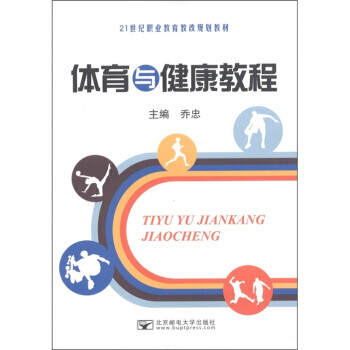具體描述
基本信息
書名:農村體育場地供需矛盾與有效供給研究
定價:35.00元
作者:張玲燕,孔慶波
齣版社:北京體育大學齣版社
齣版日期:2016-11-01
ISBN:9787564424411
字數:
頁碼:191
版次:1
裝幀:平裝
開本:16開
商品重量:0.4kg
編輯推薦
內容提要
《農村體育場地供需矛盾與有效供給研究》針對農村體育場地現狀、經濟學視角下農民體育健身與消費行為分析、體育認知視角下農民體育健身行為分析、農村體育文化建設中傳統體育文化價值挖掘、現代體育與農村體育的現代化發展等方麵的問題進行瞭深入的調查、研究與分析,其研究結果具有的參考價值。
目錄
作者介紹
孔慶波,教育學博士,重慶文理學院體育科學發展研究所所長。主要研究方嚮為體育管理學、體育教育學。現主持國傢社會科學基金項目1項、教育部人文社會科學規劃基金項目1項、重慶市體育局科研項目1項、重慶市職業教育學會項目1項,人纔引進項目1項,校級教學質量工程重點項目1項。曾主持國傢社會科學基金項目2項和省部級項目4項、參與國傢社會科學基金項目2項、參與其他省部級項目多項。在《北京體育大學學報》《體育學刊》《西安體育學院學報》等體育類核心期刊發錶論文20餘篇,省級期刊論文多篇。
文摘
序言
rural sports venues: bridging the gap between demand and supply the development of rural sports facilities is a complex issue, entwined with economic, social, and demographic factors. this book delves into the multifaceted challenges and opportunities surrounding the provision of sports venues in rural areas, aiming to offer a comprehensive analysis and actionable insights for policymakers, community leaders, and stakeholders. understanding the rural sports landscape rural communities, often characterized by their dispersed populations, aging demographics, and limited economic resources, face unique hurdles in developing and maintaining sports facilities. unlike urban centers, where a higher population density can naturally drive demand and attract investment, rural areas often struggle with a critical mass of users and the financial capacity to sustain modern amenities. the book begins by examining the current state of rural sports venues. this includes an inventory of existing facilities, such as village greens, school grounds, community halls, and open fields, and an assessment of their condition, accessibility, and suitability for various sporting activities. it acknowledges the rich history of informal sports and traditional games that have long been central to rural life, while also recognizing the growing desire for more structured and diverse recreational opportunities, mirroring trends observed in urban settings. the evolving demand for sports facilities the demand for sports facilities in rural areas is not static; it is constantly shaped by changing lifestyles, demographic shifts, and evolving leisure preferences. the book meticulously analyzes the various drivers of demand: demographic changes: while rural areas may experience out-migration of younger populations, there can also be an influx of retirees or families seeking a quieter lifestyle. understanding these population dynamics is crucial for anticipating the needs of different age groups, from organized youth sports leagues to recreational activities for seniors. the book will explore how age-specific needs – for example, the requirement for safe and accessible play areas for children, or the provision of gentle exercise spaces for older adults – influence facility planning. health and well-being initiatives: there is a growing national and global emphasis on public health and promoting active lifestyles. this trend significantly impacts rural communities, with a greater awareness of the benefits of physical activity for both physical and mental health. the book will investigate how grassroots health campaigns, the rise of wellness tourism, and a general desire for healthier living translate into increased demand for walking trails, cycling paths, multi-purpose sports courts, and fitness facilities. social cohesion and community building: sports facilities often serve as vital hubs for social interaction and community bonding. in rural settings, where social networks can be particularly important, these venues play a crucial role in bringing people together. the book will explore how demand for facilities is driven not only by the pursuit of athletic performance but also by the desire for shared experiences, intergenerational activities, and opportunities to foster a sense of belonging. this includes examining the role of sports in supporting local events, festivals, and community gatherings. economic diversification and tourism: in some rural areas, the development of sports facilities can be a strategic element of economic diversification. well-maintained and attractive venues can draw visitors, support local businesses, and contribute to the overall appeal of the region. the book will consider how demand from external groups, such as visiting sports teams, touring clubs, or participants in regional sporting events, influences facility requirements and can provide economic benefits to the local community. changing sporting trends: the popularity of different sports evolves over time. the book will analyze how new sports gaining traction nationally, such as padel tennis or disc golf, might create new demands in rural settings, requiring adaptable or specialized facilities. conversely, it will also consider the enduring appeal of traditional rural sports and the need to preserve and support these unique cultural assets. the persistent challenges of supply despite the growing and evolving demand, rural areas grapple with significant constraints in meeting these needs through effective supply. the book identifies and dissects these challenges: financial limitations: this is perhaps the most pervasive obstacle. rural local authorities and community organizations often operate with smaller budgets and a limited tax base compared to their urban counterparts. the initial capital investment required for new facilities, as well as the ongoing costs of maintenance, staffing, and utilities, can be prohibitively high. the book will explore various funding models, from grants and public-private partnerships to community fundraising and innovative revenue generation strategies, to overcome these financial hurdles. land availability and accessibility: while land may appear plentiful in rural areas, securing suitable sites for sports facilities can still be challenging. considerations such as proximity to population centers, access to utilities, environmental impact, and existing land use designations can all play a role. the book will examine strategies for identifying and acquiring appropriate land, including the repurposing of underutilized public spaces or agricultural land. technical expertise and capacity: the planning, design, construction, and management of modern sports facilities require specialized knowledge and skills. rural communities may lack access to this expertise, leading to suboptimal designs, inefficient operations, or difficulties in securing necessary permits and approvals. the book will explore how capacity-building initiatives, knowledge sharing networks, and the engagement of external consultants can address these gaps. maintenance and sustainability: the long-term viability of sports facilities hinges on effective maintenance. in rural areas, this can be hampered by a lack of skilled labor, limited access to spare parts, and insufficient operating budgets. the book will delve into best practices for facility management, including preventive maintenance strategies, sustainable design principles, and the exploration of renewable energy solutions to reduce operational costs. governance and management structures: the successful operation of sports facilities often depends on clear governance structures and effective management. in rural settings, this can be complicated by volunteer-led committees, competing priorities, and a lack of formalized management frameworks. the book will analyze different models for facility governance, from community trusts and sports associations to partnerships with local government or educational institutions, to ensure efficient and equitable management. strategies for effective supply recognizing the intricate interplay between demand and supply, this book proposes a series of actionable strategies to enhance the effective provision of rural sports venues. these strategies are not one-size-fits-all; they are designed to be adaptable to the diverse contexts of rural communities. holistic needs assessment and strategic planning: the foundation of effective supply lies in a thorough understanding of local demand. this involves conducting detailed needs assessments that go beyond simply counting potential users. it requires engaging with residents, sports clubs, schools, and community groups to identify specific needs, preferred activities, and desired facility features. the book will outline methodologies for conducting these assessments and translating them into comprehensive strategic plans that align with community aspirations and available resources. multi-purpose and adaptable design: to maximize the utility and cost-effectiveness of limited resources, the book advocates for the design of multi-purpose facilities. this means creating spaces that can accommodate a variety of sports and recreational activities, as well as non-sporting community events. examples include multi-use games areas (mugas), community sports halls that can be adapted for performances or gatherings, and outdoor spaces that can be used for everything from team sports to informal play and community festivals. the concept of "placemaking" will be explored, emphasizing how facilities can be integrated into the broader rural landscape to enhance their appeal and functionality. leveraging existing infrastructure: rather than always focusing on new builds, the book emphasizes the importance of optimizing and upgrading existing infrastructure. this could involve improving the quality and accessibility of school playing fields for community use, refurbishing village halls to accommodate indoor sports, or developing walking and cycling trails on existing public land. the book will explore models of shared use agreements and partnership arrangements that facilitate access to facilities owned by schools, local authorities, or private entities. innovative funding and financing mechanisms: overcoming financial constraints requires creative approaches to funding. the book will explore a range of options, including: grant applications: a detailed guide to identifying and securing funding from national sports councils, rural development agencies, charitable foundations, and European Union programs. public-private partnerships (ppps): exploring collaborations with private sector entities for investment, construction, and operational management, ensuring that community benefit remains paramount. community ownership and fundraising: empowering local communities to take ownership of their facilities through community asset transfer, crowdfunding campaigns, and local sponsorship initiatives. user fees and revenue generation: developing sustainable revenue streams through membership schemes, facility hire, event hosting, and concessions, while ensuring affordability and accessibility for all residents. capacity building and knowledge transfer: empowering rural communities with the skills and knowledge to manage their sports facilities effectively is crucial. the book will detail strategies for: training programs: offering workshops and courses on facility management, project planning, grant writing, marketing, and volunteer coordination. mentorship and peer networks: facilitating connections between experienced facility managers and those starting out, fostering a culture of shared learning and support. access to expertise: providing resources and connections to technical advisors, designers, and legal professionals who can assist with specific challenges. community engagement and participation: genuine community involvement is the bedrock of successful facility development and utilization. the book will stress the importance of: inclusive consultation: ensuring that all voices within the community, including marginalized groups, are heard and considered throughout the planning and development process. volunteerism: fostering a strong volunteer base for the operational management, maintenance, and programming of facilities. co-design principles: involving community members in the design process to ensure that facilities truly meet their needs and reflect local character. policy and advocacy: the book will also address the role of policy at local, regional, and national levels in supporting rural sports infrastructure. this includes advocating for increased investment, streamlined planning processes, and policies that recognize the significant social, economic, and health benefits of rural sports facilities. conclusion: a roadmap for a healthier, more connected rural future the challenges of providing adequate sports facilities in rural areas are significant, but they are not insurmountable. by understanding the intricate dynamics of demand and supply, and by adopting innovative and community-driven strategies, rural communities can bridge the gap and create vibrant, accessible, and sustainable sports venues. this book serves as a comprehensive guide, offering a roadmap for policymakers, community leaders, and all those invested in the future of rural life to build a healthier, more connected, and more active rural landscape for generations to come. it is a call to action, a testament to the enduring power of sport to enrich lives and strengthen communities, even in the most remote corners of our nation.






















